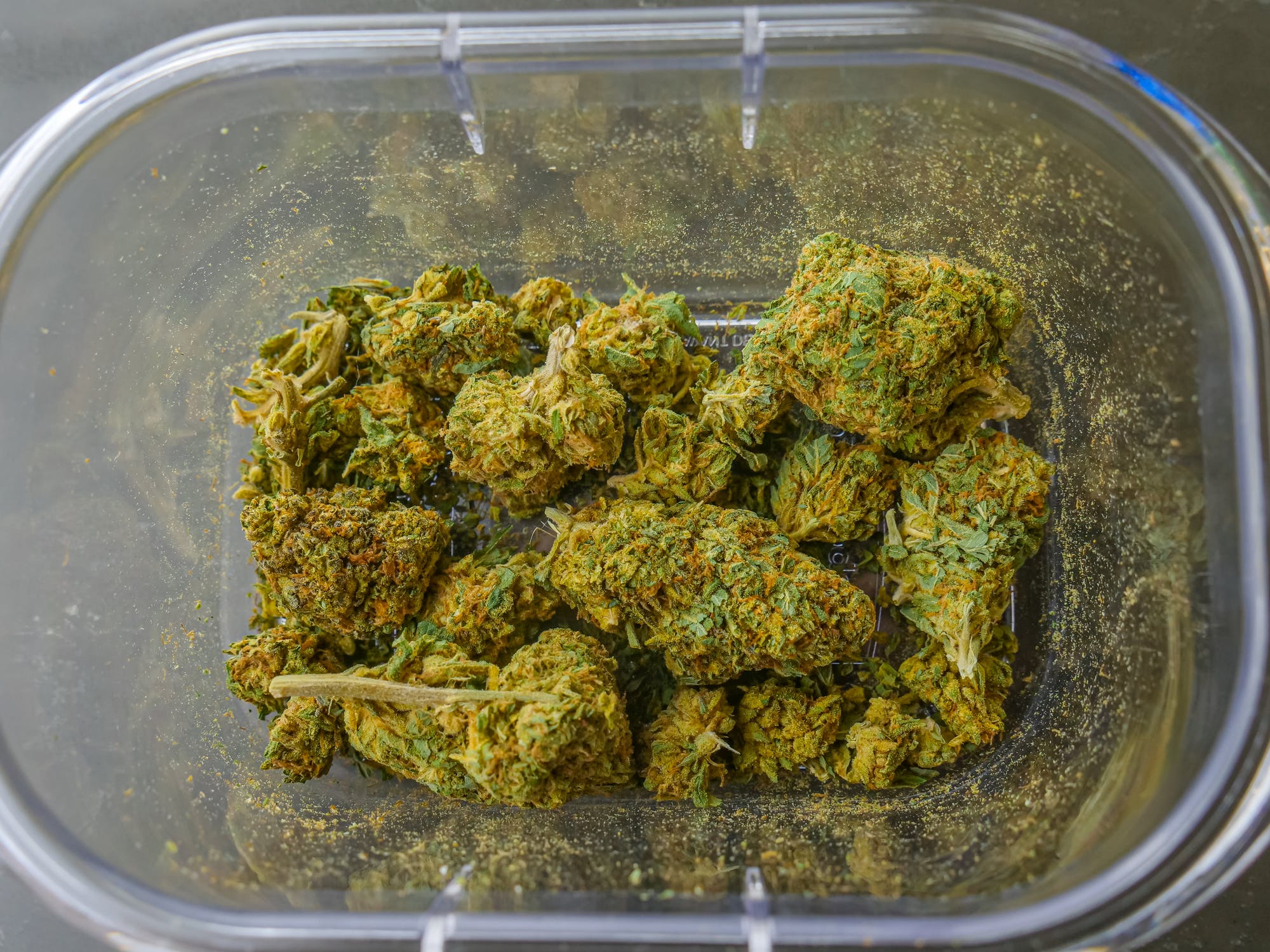After months of hard work, your plants are finally ready to harvest. However, you can’t be negligent even in this final stage: harvesting at the right time is crucial to the quality of your plants and the yields.

Harvesting too early or too late will both lead to a low potency of THC. If you want the potency and yields to reach their potential, keep reading and learn more!
Cannabis trichomes
If you observe cannabis carefully, you will see many shiny translucent resinous glands jutting out of the buds. These are called trichomes, they cover the buds, leaves, and stems of plants. This resin contains cannabinoids and aromatic terpenoids that determine the potency of buds, thus, more trichomes mean a higher quality of bud.
There are two types of female cannabis: glandular and non-glandular. The function of glandular trichomes is to produce and store large quantities of cannabis resin, almost like delicious icing on a cake. Although non-glandular can’t produce compounds, they can prevent plants from environmental influence.
Only the glandular trichomes can produce cannabinoids, and the glandular trichomes can be further divided into 3 categories:
- Bulbous trichomes: This type of trichome is 15-30 microns and is one of the smallest types of trichomes.
- Capitate-sessile trichomes: Capitate-sessile trichomes are much larger than Bulbous trichomes and can be seen with the naked eye.
- Capitate-stalked trichomes: This is the largest and most abundant type of trichome.
The main role of trichomes for cannabis is protection. They can protect plants from pests, birds, and fungus, and generally, are signs of good health.
Different stages of trichomes
Transparent—At the beginning of the flowering stage the trichomes are transparent. There is not much terpene or cannabinoid during this stage. Of course, your plants are not ready for harvest.
Milky white—After taking care of your plant during flowering, keep waiting patiently: the transparent trichomes will become milky white, looking cloudy inside. This means that the cells inside the trichomes are beginning to turn into cannabinoids, terpene, and other compounds. THC levels are beginning to reach their peak and are much higher than CBD levels. However, your plants are still not mature enough to be harvested.
Amber—Once you observe the color of trichomes changing from a milky white to an amber shade, this means the relaxing CBD compounds are being produced and THC levels are decreasing—THC is converted into CBD during the later stages of flowering.

What do trichomes look like when they are ready to harvest?
Most growers prefer to harvest when 70-80% of trichomes are milky white and 20-30% are amber-colored. The flower buds obtained at this time offer the best taste and strongest psychoactive effects. The THC to CBD ratio creates the perfect balance of energy and relaxation.
Ultimately, the timing is up to your personal preference. You can choose when to harvest according to your personal taste—those who want more energetic effects can harvest slightly earlier. Growers looking for a calming effect can delay the harvest a little bit.
When the trichomes are all amber and start to turn brown is when the plants are totally mature. If all flower buds turn black and start to curl and more than half of the leaves turn yellow and fall off, CBD levels are at their highest point. At this time, the psychoactive compounds of the harvested cannabis buds have dramatically declined, but the taste will still be strong and will create a strong sedative and anesthetic effect.
However, you can’t postpone gathering further, as terpenes and cannabinoids will degrade over time, causing the buds to lose potency if left unharvested.
The ideal window aims for that milky-amber trichome mix, but minor adjustments allow tailoring the effects to your preference while avoiding an over-mature final product.
Here’s a general timeline of trichome development and harvest readiness:
| Stages | Description |
| Appearance of Trichomes |
|
| Maturation of Trichomes |
|
| Transition to Amber Trichomes |
|
| Optimal Harvest Window |
|

Other signs that cannabis is ready for harvest
Yellowing fan leaves: Cannabis plants usually have larger fan leaves that are used to capture light to perform photosynthesis. These leaves are wide and are easily recognizable by their size and distinct shape. When these green leaves turn yellow, you should be careful: this is a sign that your plants are ready for harvest.
Darkening of the pistil: The pistil is a hair-like structure that protrudes from the calyx. They start as a white, sparse structure at the beginning of the flowering period and can help you distinguish males from females. When the pistils have darkened to red, brown, or orange, the cannabis plant has accumulated sufficient quantities of cannabinoids and is ready for harvest—you’ve surely seen these pistils when smoking.
The magical part of indoor growing is that you can control everything, including the taste of your cannabis. We hope that through this article you will know when to harvest according to your personal taste (just check the color of trichomes).
As a new grower, it may be difficult to tell the differences between transparent and milky white, but as you accumulate growing experience this won’t be such a problem.
How to tell when marijuana is ready to harvest?
| Trichome Color | The most reliable indicator is the color of the tiny mushroom-shaped trichomes on the buds. Use a magnifying glass or jeweler’s loupe to inspect the trichomes closely. Ideally, you want 50-70% of the trichome heads to be cloudy/milky white, with 30% or less being amber colored. Clear trichomes mean premature, while all amber indicates over-ripeness. |
| Pistil Color | The pistillate hairs extending from the buds should have started to curl inward and darken from white to orange/red/brown colors. When 60-70% of the hairs have darkened, it’s a sign buds have finished fattening up. |
| Calyx Swelling | The calyx formations holding the buds together become fully swollen and plump when ready. The calyxes will feel firm and solid to a gentle squeeze. |
| Bud Aroma | Well-developed buds give off a strong, pungent aroma when gently rubbed. It signals full terpene production for flavor and aroma. |
Common mistakes when harvesting cannabis
| Common Mistakes | Description |
| Harvesting Too Early or Too Late |
|
| Improper Trimming |
|
| Inadequate Flushing |
|
| Incorrect Drying and Curing |
|
| Ignoring Environmental Factors |
|
| Using Improper Tools |
|
| Rushing the Process |
|
If you have any questions, please don’t hesitate to reach out to us!
And be sure to check out our other blog posts for useful tips on becoming a great grower!
Subscribe to the VIVOSUN newsletter for growing tips, grower stories, and special offers, and get 12% off your first order!
We love the new VIVOSUN Smart Grow System and we are certain that you too will love it once you try it.
And join our Facebook farmer’s community for even more exclusive contests and prizes!
Download VIVOSUN App to get 18% off and explore more information!






